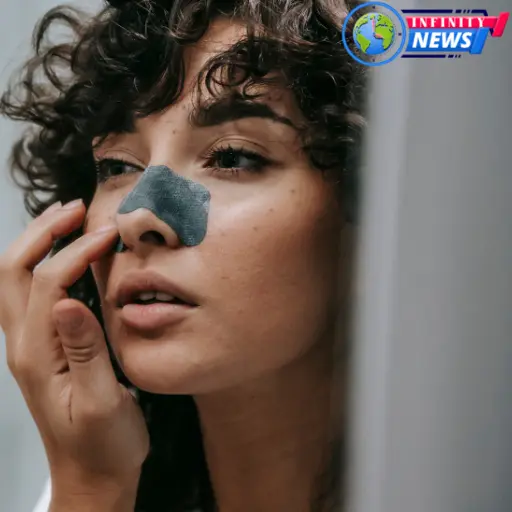Introduction to aquiline nose
An aquiline nose, often described as a nose with a prominent dorsal hump or a slightly curved bridge, is a distinctive feature seen in many individuals across various cultures. While some embrace it as a symbol of character and strength, others seek ways to soften its appearance through rhinoplasty or non-surgical nose reshaping. The term “aquiline” comes from the Latin word aquilinus, meaning “eagle-like,” referencing the curved shape that resembles a beak.

This type of nose shape is more common in certain ethnic groups and is often passed down through genetics. It’s sometimes referred to as a hooked nose or a Roman nose, though there are subtle differences between these terms. Whether you’re curious about your facial features, exploring cosmetic enhancements, or just learning more about nasal structure, understanding the aquiline nose helps you make informed decisions.
In this guide, we’ll explore the causes, cultural significance, and correction options for the aquiline nose—helping you decide whether to embrace it or enhance it based on your personal goals.
Understanding the Aquiline Nose: Meaning, Traits & Correction Options
Aquiline Nose Meaning
An aquiline nose is defined by its prominent, curved bridge, often forming a slight downward slope or “hook.” The term “aquiline” comes from the Latin aquilinus, meaning “eagle-like,” referencing the resemblance to an eagle’s beak. This nose type is often associated with strength, intelligence, and nobility across various cultures and historical periods.
Aquiline Nose Characteristics
The most recognizable aquiline nose characteristics include:
- A noticeable dorsal hump along the bridge of the nose
- A straight or slightly convex profile
- A downturned tip, in some cases
- A sharp and defined nasal bone structure
These features can vary in prominence based on genetics, ethnicity, or even past trauma.
Aquiline Nose vs. Roman Nose
While often used interchangeably, there’s a subtle distinction in the aquiline nose vs. Roman nose debate. A Roman nose generally refers to a strong, straight bridge with a more angular or heroic profile, often lacking the pronounced curve or hook seen in the aquiline variant. In essence, all Roman noses can be aquiline, but not all aquiline noses are Roman.
Aquiline Nose Surgery Options
If someone feels self-conscious about their aquiline nasal profile, there are both surgical and non-surgical options available:
- Rhinoplasty (surgical nose reshaping) is the most permanent solution. It often involves dorsal hump removal or reshaping the nasal tip.
- Non-surgical rhinoplasty uses dermal fillers to camouflage the hump, offering a temporary and less invasive fix.
- The best choice depends on your goals, budget, and whether you’re seeking subtle enhancement or permanent structural change.
What Does an Aquiline Nose Look Like?
An aquiline nose is known for its high nasal bridge and a noticeable dorsal hump that creates a curved or slightly bent profile. Often referred to as a Roman nose or hooked nose, it typically features a strong, defined nose shape that slopes downward or arches out in the middle. While it can add a bold and classic character to the face, some people feel it makes their facial features look unbalanced.

This nasal structure is more common in people of Mediterranean, Middle Eastern, and Central Asian descent. Men often have a more pronounced aquiline nose, but it appears in all genders. The curve is usually due to the shape of the nasal bones and cartilage, which may develop that way naturally or result from an injury.
It’s important to note that not all curved noses are considered aquiline—true aquiline noses have a smooth arch rather than sharp angles. If you’re wondering about your own nose profile, a consultation with a facial plastic surgeon can help assess whether it falls into this category.
Origins and Causes of an Aquiline Nose
The most common cause of an aquiline nose is genetic inheritance. If one or both parents have a pronounced dorsal hump or high nasal bridge, there’s a good chance the trait will be passed down. Nose shape genetics plays a key role in determining not only the curve of your nose but also the overall nasal structure and tip projection.
Ethnicity and ancestry also influence the likelihood of having an aquiline or hooked nose. This nose shape is often found in individuals of Middle Eastern, Mediterranean, and Central Asian descent, where a high bridge and defined profile are considered common features.
In some cases, trauma or injury during growth can lead to an aquiline appearance, especially if the nasal bones heal irregularly. Even mild childhood accidents may affect the nose profile, leading to the development of a hump later in life. Identifying the cause is essential before considering nose reshaping or rhinoplasty.
Cultural and Historical Symbolism of the Aquiline Nose
Throughout history, the aquiline nose has held deep symbolic meaning in many cultures. In Ancient Rome and Greece, a curved or high-bridged nose was associated with leadership, intelligence, and power. Many sculptures of emperors, philosophers, and gods featured this distinctive nose shape, reinforcing its image as a sign of strength and nobility.
Over time, cultural views on nose shape have shifted. In some modern societies, especially in the West, a prominent dorsal hump may be seen as less desirable due to changing beauty standards that favor smooth or petite nasal profiles. This has led to societal stereotypes linking certain nose shapes to specific personality traits or backgrounds.
Still, in various regions and communities, the aquiline nose is seen as a mark of nobility and distinction. While beauty ideals vary globally, this nasal structure continues to carry historical and cultural significance, reminding us that aesthetics are often shaped by tradition, geography, and evolving ideals.
Ancient Rome and Greek Interpretations
In ancient times, especially within Greek and Roman societies, the aquiline nose was admired and often symbolized power, intelligence, and leadership. Statues and busts of Roman emperors and philosophers frequently featured this strong nose shape, highlighting it as a mark of nobility and honor. The aquiline nose meaning in history was deeply tied to respectability many believed that a high-bridged, curved nose conveyed wisdom and authority.
Modern Societal Biases or Stereotypes
Today, perceptions of the aquiline nose vary widely. In some Western cultures, a nasal hump or sharply defined profile may be viewed as too harsh or masculine, especially in beauty-driven media. This has led to societal stereotypes around nose shape some associate it with dominance or arrogance, while others see it as unique and elegant. These modern biases often drive individuals to seek nose reshaping procedures like rhinoplasty.
Is It Still Seen as a Sign of Nobility?
In many cultures, yes. While beauty trends evolve, in parts of the Middle East, South Asia, and Mediterranean regions, the aquiline nose is still seen as a symbol of nobility, heritage, and strength. Its prominence can reflect deep ancestral ties and status, showing that cultural views on nose shape are far from one-size-fits-all.
The Psychology Behind Nose Shape
How Nose Shape Affects Self-Image
Your nose shape plays a major role in how you perceive your facial features. For many, a pronounced aquiline nose can be a unique and defining trait. However, in a world heavily influenced by filtered images and beauty trends, some individuals may feel self-conscious about having a dorsal hump or curved nasal profile. Studies show that nose shape and self-esteem are closely linked, especially during adolescence and early adulthood.

Common Psychological Responses to Facial Asymmetry
Mild facial asymmetry like a nose that curves more to one side or appears dominant—can trigger body image concerns. While most facial features aren’t perfectly symmetrical, noticeable imbalances may draw attention and cause people to fixate on perceived flaws. This can lead to emotional responses ranging from insecurity to social anxiety.
Confidence and Cultural Pressures
In cultures that idealize small, straight noses, the aquiline nose may be seen as something to “correct.” This pressure can influence people to explore cosmetic nose surgery or non-surgical nose reshaping. But confidence doesn’t always come from changing your look it often comes from understanding and accepting the unique traits that define your identity.
Is an Aquiline Nose Attractive?
Survey Insights and Public Opinions
The question of whether an aquiline nose is attractive has many answers—and most depend on who you ask. In recent surveys on facial attractiveness, many respondents viewed strong, defined nose shapes as unique and striking. Others, particularly in Western countries, favored small, symmetrical noses that align with conventional beauty trends. These public opinions on nose shape often reflect deeper cultural values and media influences.
Cultural Beauty Standards Around the World
Beauty standards across cultures vary widely. In countries like Iran, India, and parts of Europe, an aquiline nose is often seen as a symbol of character, maturity, and heritage. In contrast, East Asian cultures typically idealize smaller, upturned noses. These differences prove that nose shape attractiveness is deeply subjective and shaped by cultural beauty norms rather than universal rules.
Social Media and Changing Perceptions
Platforms like Instagram and TikTok have both challenged and reinforced traditional beauty ideals. While filters often promote narrow, smooth nasal profiles, there’s also a growing trend of celebrating unique facial features, including prominent nose bridges and dorsal humps. Influencers embracing their natural nose shapes are helping shift perceptions proving that beauty today is more about authenticity than perfection.
Non-Surgical Enhancements for an Aquiline Nose
For those who want to soften the appearance of an aquiline nose without going under the knife, non-surgical nose reshaping offers a popular alternative. This minimally invasive approach uses dermal fillers for nose contouring, allowing doctors to smooth out a dorsal hump or lift the nasal tip for a more balanced profile without any incisions.
Often called a liquid rhinoplasty or non-surgical nose job, this procedure takes less than 30 minutes and requires little to no downtime. While results are immediate and can last up to 12–18 months, it’s important to remember that temporary solutions for nose reshaping are not permanent.
Pros and Cons
Pros include quick results, minimal recovery, and no surgery. Cons involve temporary effects, potential swelling, and limited structural change.
Cost, Risks, and Expected Results
The average non-surgical nose job cost ranges from $500–$1,500 depending on location and filler type. Risks include minor bruising or asymmetry, but when performed by a skilled injector, results can be highly satisfying and confidence-boosting.
Rhinoplasty for Aquiline Nose
For those seeking a permanent solution to an aquiline nose, rhinoplasty is the most effective option. This surgical procedure reshapes the nasal structure, often focusing on dorsal hump removal and refining the overall nose profile.
Open vs. Closed Rhinoplasty
There are two main approaches to aquiline nose surgery:
- Open rhinoplasty involves a small incision between the nostrils, offering the surgeon full visibility and control. It’s ideal for complex reshaping.
- Closed rhinoplasty hides all incisions inside the nose and is often used for minor corrections. It typically results in less swelling and a quicker recovery.
Techniques for Dorsal Hump Removal
Surgeons use precise tools to shave or reshape the nasal bone and cartilage that form the dorsal hump. The goal is to create a smoother bridge while preserving nasal function and harmony with other facial features.
Recovery Timeline and Expectations
Most patients experience swelling and bruising in the first 1–2 weeks. Full healing and final results can take up to a year, although improvements are visible within the first few months. With proper care, rhinoplasty for dorsal hump correction delivers lasting, natural-looking results.
Choosing the Right Surgeon
Selecting the right professional for your aquiline nose surgery is one of the most important steps toward a successful outcome. Whether you’re considering rhinoplasty for dorsal hump removal or a non-surgical nose enhancement, your results heavily depend on the surgeon’s skill and experience.
Qualifications to Look For
Look for a board-certified facial plastic surgeon or ENT specialist with a proven track record in nose reshaping procedures. Experience in aquiline nose correction is key, as it requires a deep understanding of nasal anatomy, balance, and aesthetics. Ensure the surgeon specializes in both open and closed rhinoplasty techniques, depending on your specific case.
Questions to Ask During Consultation
- How many aquiline nose surgeries have you performed?
- Which rhinoplasty method do you recommend for me, and why?
- What are the potential risks and limitations?
These questions to ask before a nose job will help you feel more confident and informed.
Before-and-After Image Analysis
Always review a portfolio of before-and-after rhinoplasty photos especially those that match your nose type. This visual comparison reveals the surgeon’s style and gives insight into realistic results for dorsal hump correction or nose contouring.
Cost Breakdown & Financing Options
Understanding the cost of aquiline nose surgery is crucial before deciding on any treatment. Whether you’re considering a non-surgical nose job or a full rhinoplasty, prices can vary significantly based on location, expertise, and procedure type.
Regional Pricing Ranges
On average, the cost of rhinoplasty ranges between $5,000 and $15,000 in the U.S. In cities like New York or Los Angeles, prices tend to be on the higher end due to demand and surgeon experience. Meanwhile, non-surgical nose reshaping with dermal fillers may cost between $500 and $1,500, depending on the clinic and product used.
Insurance vs. Cosmetic Categorization
Most procedures to correct an aquiline nose are considered cosmetic, meaning insurance does not cover them. However, if the surgery addresses breathing issues or a deviated septum, insurance coverage for rhinoplasty may apply partially or fully.
Installment or Credit Plans
Many clinics offer rhinoplasty financing options, such as installment plans, medical credit cards, or in-house payment plans. These can help make nose job costs more manageable by spreading payments over time.
Aquiline Nose in Art & Pop Culture
The aquiline nose has long been featured in both classical art and modern pop culture, often portrayed as a marker of strength, intellect, or nobility. Throughout history, artists and writers have intentionally highlighted this distinctive nose shape to communicate personality, power, or social status.
Famous Figures with Aquiline Noses
From antiquity to the red carpet, many well-known figures have embraced their aquiline nasal profile. Julius Caesar and Napoleon Bonaparte were famously depicted with hooked or prominent noses, symbolizing authority and leadership. In the modern era, celebrities like Adrien Brody, Barbra Streisand, and Daniel Day-Lewis have challenged narrow beauty standards by proudly owning their unique facial features.
Symbolism in Art and Literature
In classical sculptures and paintings, the aquiline nose often represented wisdom, courage, or noble lineage. In literature, authors used this trait to shape character perception—heroes and villains alike were sometimes defined by their facial structure, especially the nose, to subtly reflect inner qualities or class.
The continuing visibility of this feature in pop culture and fine art proves that the aquiline nose remains a symbol of individuality and distinction.
FAQs About the Aquiline Nose
1. What is an aquiline nose?
An aquiline nose is characterized by a high, curved bridge that often gives the appearance of a slight “hook.” The term comes from the Latin word aquilinus, meaning “eagle-like,” due to its resemblance to an eagle’s beak.
2. Is an aquiline nose the same as a Roman nose?
Yes, the terms aquiline nose and Roman nose are often used interchangeably. Both describe a prominent nasal bridge with a downward curve or hump, commonly seen in classical Roman sculpture and profiles.
3. Is an aquiline nose considered attractive?
Attractiveness is subjective. In many cultures, an aquiline nose is seen as noble, elegant, or strong, while others may prefer smaller, straighter profiles. Trends vary globally, and appreciation for unique features is growing.
4. Can you fix an aquiline nose without surgery?
Yes, non-surgical nose jobs using dermal fillers can temporarily smooth a dorsal hump or lift the tip. However, for permanent changes, rhinoplasty is the most effective option.
Conclusion & Final Verdict
The aquiline nose, with its distinctive bridge and noble silhouette, has sparked admiration, curiosity, and occasional controversy across cultures and centuries. Whether you view it as a mark of classical beauty, a strong family trait, or simply a feature you’re learning to embrace, one thing is clear: nose shape is deeply personal, and how you feel about it matters most.
Thanks to modern cosmetic advancements, you have options from non-surgical enhancements with fillers to permanent rhinoplasty solutions. Yet, it’s equally powerful to see the growing movement toward self-acceptance and celebrating unique facial features as they are.
Whether you’re considering subtle changes or simply seeking to understand the meaning of an aquiline nose, knowledge is your best tool. Explore, reflect, and most importantly, make choices that align with your sense of identity not just trends.
Related Article green noise: Science, Benefits, and Future of Sound Therapy

Pingback: what nose type do i have? Discover Your Unique Nose Shape